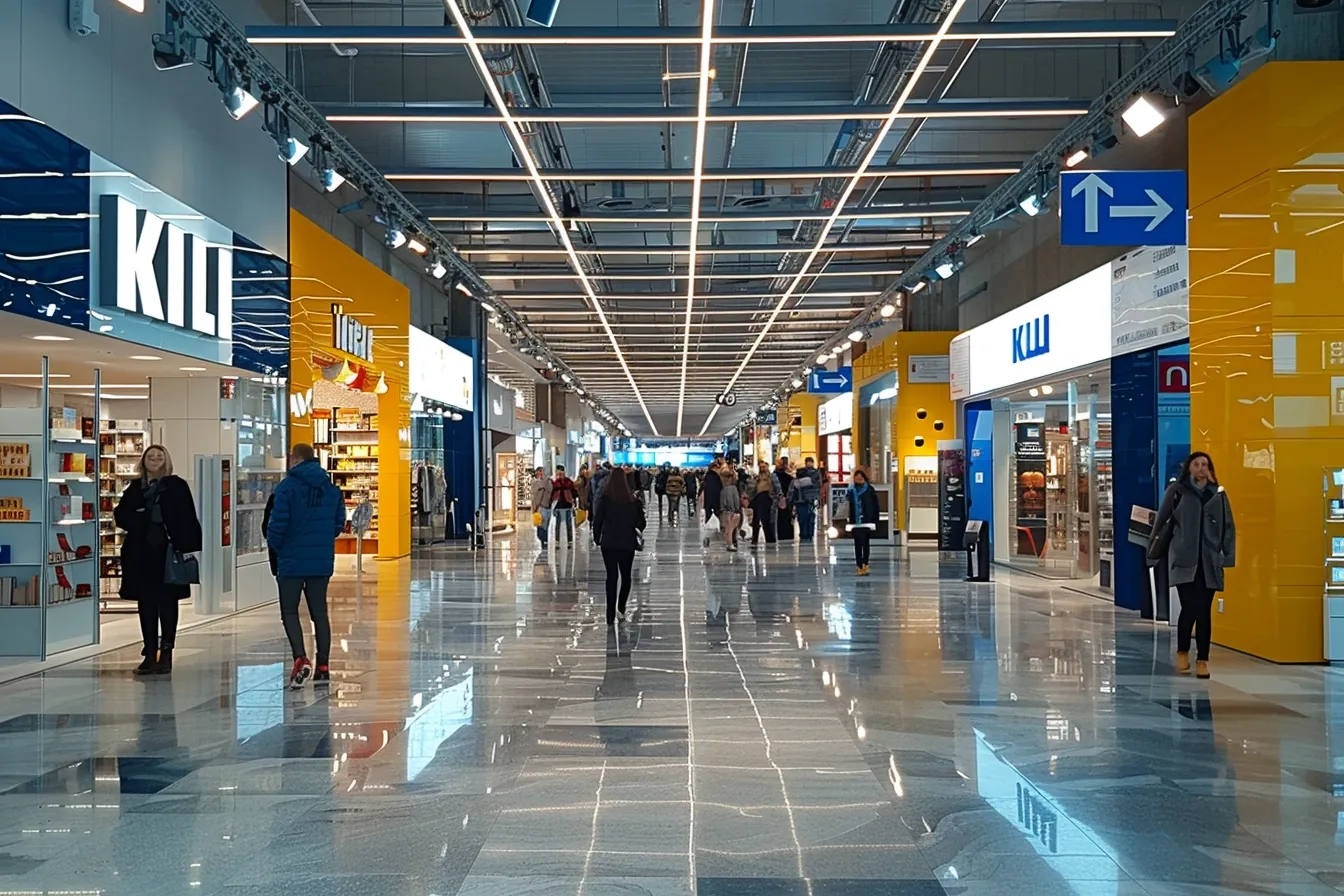Introduction to Global Design Trends and Their Impact
Global trends are crucial in influencing the look and feel of local markets in the dynamic fields of branding and design. These trends’ cross-border spread has sparked a dynamic interaction between local cultures and global influences, resulting in a complex tapestry of design approaches that satisfy a wide range of consumer tastes.

The Rise of Global Design Trends
With the advent of the digital age, an era of unparalleled connection has arrived, facilitating the rapid cross-border movement of design trends. Global design trends are a melting pot of cultural influences that show a collective march toward innovation, sustainability, and inclusion. Examples of these influences range from the bright patterns of African fabrics to the minimalist Scandinavian design. These trends, which push the limits of creativity and usefulness, are driven by social media platforms, design periodicals, and international trade events. They set the standard for what is deemed modern.
Impact on Regional Markets
Local markets are rapidly embracing and customizing these global design trends to fit their demands and tastes, as they each have distinct cultural and historical backgrounds. The process of “glocalization,” which involves localizing global notions to fit into a specific region’s cultural and social fabric, was born out of this fusion of global and local aspects. To appeal to both local and global design sensibilities, a furniture business may, for example, use traditional crafting skills and locally produced materials combined with minimalist design concepts.
Discover the effectiveness of minimalism in design:

Enhancing Brand Identity and Consumer Engagement
It’s not enough for companies to merely stay current when they incorporate global design trends into their goods and services. It all comes down to developing a unique brand identity that appeals to a wide range of consumers. Brands may reach a wider audience and break down barriers of geography and culture by adhering to global aesthetics. This universal appeal and profound regard for regional customs may improve customer engagement and encourage a sense of loyalty and belonging.
Comprehend the breadth of the intersection of culture and branding:
Sustainability and Innovation: Their Critical Roles
Recent years have seen a huge global movement toward sustainability, which has profound implications for regional economies. Growing consumer awareness of the impact of their purchases on the environment is driving demand for environmentally friendly and ethically created items. Apart from contributing to environmental preservation, companies that prioritize sustainability in their design and production processes might gain from the growing consumer base of eco-aware individuals. In a similar vein, design innovation may make a company stand out in a competitive market by introducing cutting-edge materials, technologies, or methods.

The ability of design to bridge cultures and communities is demonstrated by the impact of international design trends on regional marketplaces. Local markets may become more globally competitive by adopting these trends and providing goods and services that are both firmly anchored in local customs and aesthetically pleasing to all consumers. The relationship between local markets and global trends will surely change as the globe gets more linked, offering both new possibilities and problems for companies and designers.
Learn more about the importance of eco-friendly practices:
Dealing with Difficulties and Capitalizing on Opportunities
Local markets are being more influenced by global design trends, requiring firms and designers to negotiate a complicated environment with many possibilities and difficulties.
Balancing Global Appeal with Local Authenticity
Maintaining the local character and cultural integrity while accepting global design trends is one of the biggest problems. To create goods that are in line with regional customs and values, designers and businesses must strike a careful balance between local authenticity and global appeal. For instance, a fashion business may combine worldwide minimalism and sustainability trends with local textiles and artwork to create a distinctive combination that appeals to both domestic and foreign consumers.

Strategic Adaptation and Innovation
Global trends may be tailored to suit local tastes via creativity and strategic thinking. It necessitates not only a superficial application of trends but also a deep understanding of local culture, customer behavior, and market dynamics. This shift in strategy may lead to innovation as businesses devise new ways to integrate local and global factors. In the context of technology, for instance, a mobile application developed with global UX/UI principles could be customized with localized content and regional languages to boost user engagement in certain places.
Using Technology to Expand Globally
Technology is essential to the spread and appropriation of international design ideas. Social media and digital platforms have made it simpler for marketers and designers to present their work to a worldwide audience, get rapid feedback, and keep up with emerging trends. Technology also makes it easier to explore new materials and production methods, which leads to the development of creative goods that satisfy local and international market demands.
Explore the role of social media in branding:
The Importance of Collaboration and Community
Working together, companies, craftspeople, and designers from various cultural backgrounds may enhance the adaptation process and provide more genuine and meaningful design solutions. A more inventive and inclusive environment may be created in the design profession by cultivating a community that embraces diversity and cross-cultural exchange. Through its respectful and highlighting integration into modern creations, these partnerships may also aid with the preservation of old skills and practices.
There is a constantly shifting terrain of possibilities and threats associated with bringing international design ideas into domestic marketplaces. Through deliberate adaptation, creativity, and cooperation, firms, and designers may navigate these challenges and produce goods that are truly local yet appealing worldwide. The future of design is bright, with boundless opportunities for creative interchange and mutual inspiration within the ever-growing global design community. This bodes well for a world where design knows no borders and helps bring people of all backgrounds closer together.
Learn how to create enduring relationships with the consumers:
Future Directions and Real-World Application
Understanding the trajectory of this dynamic link and the process of effective real-world brand navigation is crucial as we delve deeper into the relationship between local markets and global design trends. Let’s delve into future orientations of global design influences, revisit a real-world case study, and provide insights into practical implementations and the tangible impact on brand performance.
Predicting Future Directions in Global Design Trends
Global design trends suggest that the globe will become even more integrated in the future, with seamless ideas and cultural influences flowing across people. Local markets are anticipated to adopt sustainability and digital innovation in ways that are consistent with their cultural identity and environmental setting, while these developments continue to influence global trends. A major factor in this might be the increasing use of augmented reality (AR) and virtual reality (VR) in design processes, which enable more immersive experiences that close the gap between global inspiration and local application.
Emphasizing Ethical Practices and Sustainability
The growing focus on sustainability and ethical behavior is another important trend. Customers are becoming more aware of how their purchases affect society and the environment. Brands are being pressured by this knowledge to implement more sustainable and transparent procurement methods, reduce waste, and use ethical products. These principles will probably be more deeply ingrained in design methods in the future, as local markets use their resources and customs to support a more sustainable global market.
Real-World Application: IKEA’s Global Influence on Local Design
IKEA is a great example of a company that has managed to strike a balance between following international trends and making adjustments for regional markets. The massive Swedish furniture company, renowned for its practical and simple designs, has had a big effect on global markets. IKEA doesn’t, however, employ a one-size-fits-all policy when it comes to expanding into new areas. The company makes significant investments in market research to comprehend regional demands, tastes, and cultural quirks.

For instance, IKEA recognized the restricted living space in many Japanese houses and modified its designs to suit the local desire for smaller, space-saving furniture in Japan. This modification demonstrated not just IKEA’s dedication to fulfilling regional demands but also its ability to skillfully combine worldwide design trends with regional market preferences.
Innovation and Cooperation: IKEA’s Partnership Approach
IKEA’s success is also credited to its partnerships with regional designers and artists to produce limited-edition collections that uphold the company’s international design approach while paying homage to the nation’s cultural legacy. These partnerships enhance the brand’s services and involve local communities by acting as a link between global trends and regional customs.
Global design trends’ impact on regional marketplaces is a complex phenomenon that presents both chances and problems. Successful companies must be able to develop and adapt while honoring and adopting local customs and cultures, as shown by IKEA and other similar firms. As we look to the future, the design community is poised for a fascinating period in which local and global influences combine to produce solutions that are not just practical and visually beautiful, but also culturally relevant and sustainable. Collaboration, creativity, and a deeper comprehension of how intertwined our global world is are the ways forward.






